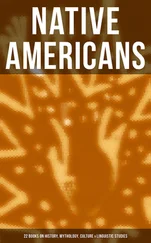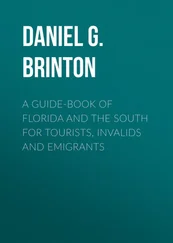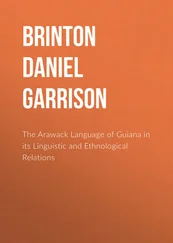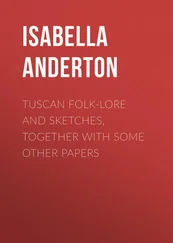Daniel Brinton - Nagualism - A Study in Native American Folk-lore and History
Здесь есть возможность читать онлайн «Daniel Brinton - Nagualism - A Study in Native American Folk-lore and History» — ознакомительный отрывок электронной книги совершенно бесплатно, а после прочтения отрывка купить полную версию. В некоторых случаях можно слушать аудио, скачать через торрент в формате fb2 и присутствует краткое содержание. ISBN: , Жанр: foreign_antique, foreign_prose, на английском языке. Описание произведения, (предисловие) а так же отзывы посетителей доступны на портале библиотеки ЛибКат.
- Название:Nagualism: A Study in Native American Folk-lore and History
- Автор:
- Жанр:
- Год:неизвестен
- ISBN:http://www.gutenberg.org/ebooks/26426
- Рейтинг книги:4 / 5. Голосов: 1
-
Избранное:Добавить в избранное
- Отзывы:
-
Ваша оценка:
- 80
- 1
- 2
- 3
- 4
- 5
Nagualism: A Study in Native American Folk-lore and History: краткое содержание, описание и аннотация
Предлагаем к чтению аннотацию, описание, краткое содержание или предисловие (зависит от того, что написал сам автор книги «Nagualism: A Study in Native American Folk-lore and History»). Если вы не нашли необходимую информацию о книге — напишите в комментариях, мы постараемся отыскать её.
Nagualism: A Study in Native American Folk-lore and History — читать онлайн ознакомительный отрывок
Ниже представлен текст книги, разбитый по страницам. Система сохранения места последней прочитанной страницы, позволяет с удобством читать онлайн бесплатно книгу «Nagualism: A Study in Native American Folk-lore and History», без необходимости каждый раз заново искать на чём Вы остановились. Поставьте закладку, и сможете в любой момент перейти на страницу, на которой закончили чтение.
Интервал:
Закладка:
Daniel G. Brinton
Nagualism: A Study in Native American Folk-lore and History
1.The words, a nagual , nagualism , a nagualist , have been current in English prose for more than seventy years; they are found during that time in a variety of books published in England and the United States, 1 1 These words occur a number of times in the English translation, published at London in 1822, of Dr. Paul Felix Cabrera’s Teatro Critico Americano . The form nagual instead of nahual , or naual , or nawal has been generally adopted and should be preferred.
yet are not to be discovered in any dictionary of the English language; nor has Nagualism a place in any of the numerous encyclopædias or “Conversation Lexicons,” in English, French, German or Spanish.
This is not owing to its lack of importance, since for two hundred years past, as I shall show, it has been recognized as a cult, no less powerful than mysterious, which united many and diverse tribes of Mexico and Central America into organized opposition against the government and the religion which had been introduced from Europe; whose members had acquired and were bound together by strange faculties and an occult learning, which placed them on a par with the famed thaumaturgists and theodidacts of the Old World; and which preserved even into our own days the thoughts and forms of a long suppressed ritual.
In several previous publications I have referred briefly to this secret sodality and its aims, 2 2 For instance, in “The Names of the Gods in the Kiche Myths,” pp. 21, 22, in Proceedings of the American Philosophical Society , 1881; Annals of the Cakchiquels , Introduction, p. 46; Essays of an Americanist , p. 170, etc.
and now believe it worth while to collect my scattered notes and present all that I have found of value about the origin, aims and significance of this Eleusinian Mystery of America. I shall trace its geographical extension and endeavor to discover what its secret influence really was and is.
2.The earliest description I find of its particular rites is that which the historian Herrera gives, as they prevailed in 1530, in the province of Cerquin, in the mountainous parts of Honduras. It is as follows:
“The Devil was accustomed to deceive these natives by appearing to them in the form of a lion, tiger, coyote, lizard, snake, bird, or other animal. To these appearances they apply the name Naguales , which is as much as to say, guardians or companions; and when such an animal dies, so does the Indian to whom it was assigned. The way such an alliance was formed was thus: The Indian repaired to some very retired spot and there appealed to the streams, rocks and trees around him, and weeping, implored for himself the favors they had conferred on his ancestors. He then sacrificed a dog or a fowl, and drew blood from his tongue, or his ears, or other parts of his body, and turned to sleep. Either in his dreams or half awake, he would see some one of those animals or birds above mentioned, who would say to him, ‘On such a day go hunting and the first animal or bird you see will be my form, and I shall remain your companion and Nagual for all time.’ Thus their friendship became so close that when one died so did the other; and without such a Nagual the natives believe no one can become rich or powerful.” 3 3 Historia de las Indias Occidentales , Dec. iv, Lib. viii, cap. 4.
This province of Cerquin appears to have been peopled by a tribe which belonged to the great Mayan stock, akin to those which occupied most of the area of what is now Yucatan, Tabasco, Chiapas and Guatemala. 4 4 More especially it is the territory of the Chorti dialect, spoken to this day in the vicinity of the famous ancient city of Copan, Honduras. Cerquin lies in the mountains nearly due east of this celebrated site. On the Chorti, see Stoll, Zur Ethnographie der Republik Guatemala , pp. 106-9.
I shall say something later about the legendary enchantress whom their traditions recalled as the teacher of their ancestors and the founder of their nation. What I would now call attention to is the fact that in none of the dialects of the specifically Mexican or Aztecan stock of languages do we find the word nagual in the sense in which it is employed in the above extract, and this is strong evidence that the origin of Nagualism is not to be sought in that stock.
3.We do find, however, in the Nahuatl language, which is the proper name of the Aztecan, a number of derivatives from the same root, na , among them this very word, Nahuatl , all of them containing the idea “to know,” or “knowledge.” The early missionaries to New Spain often speak of the naualli (plural, nanahualtin ), masters of mystic knowledge, dealers in the black art, wizards or sorcerers. They were not always evil-minded persons, though they seem to have been generally feared. The earliest source of information about them is Father Sahagun, who, in his invaluable History, has the following paragraph:
“The naualli , or magician, is he who frightens men and sucks the blood of children during the night. He is well skilled in the practice of this trade, he knows all the arts of sorcery ( nauallotl ) and employs them with cunning and ability; but for the benefit of men only, not for their injury. Those who have recourse to such arts for evil intents injure the bodies of their victims, cause them to lose their reason and smother them. These are wicked men and necromancers.” 5 5 Bernardino de Sahagun, Historia de la Nueva España , Lib. x, cap. 9.
It is evident on examining the later works of the Roman clergy in Mexico that the Church did not look with any such lenient eye on the possibly harmless, or even beneficial, exercise of these magical devices. We find a further explanation of what they were, preserved in a work of instruction to confessors, published by Father Juan Bautista, at Mexico, in the year 1600.
“There are magicians who call themselves teciuhtlazque , 6 6 Derived from teciuhtlaza , to conjure against hail, itself from teciuh , hail. Alonso de Molina, Vocabulario Mexicano , sub voce.
and also by the term nanahualtin , who conjure the clouds when there is danger of hail, so that the crops may not be injured. They can also make a stick look like a serpent, a mat like a centipede, a piece of stone like a scorpion, and similar deceptions. Others of these nanahualtin will transform themselves to all appearances (segun la aparencia), into a tiger, a dog or a weasel. Others again will take the form of an owl, a cock, or a weasel; and when one is preparing to seize them, they will appear now as a cock, now as an owl, and again as a weasel. These call themselves nanahualtin .” 7 7 Bautista, Advertencias para los Confesores , fol. 112 (Mexico, 1600).
There is an evident attempt in this somewhat confused statement to distinguish between an actual transformation, and one which only appears such to the observer.
In another work of similar character, published at Mexico a few years later, the “Road to Heaven,” of Father Nicolas de Leon, we find a series of questions which a confessor should put to any of his flock suspected of these necromantic practices. They reveal to us quite clearly what these occult practitioners were believed to do. The passage reads as follows, the questions being put in the mouth of the priest:
“Art thou a soothsayer? Dost thou foretell events by reading signs, or by interpreting dreams, or by water, making circles and figures on its surface? Dost thou sweep and ornament with flower garlands the places where idols are preserved? Dost thou know certain words with which to conjure for success in hunting, or to bring rain?
Читать дальшеИнтервал:
Закладка:
Похожие книги на «Nagualism: A Study in Native American Folk-lore and History»
Представляем Вашему вниманию похожие книги на «Nagualism: A Study in Native American Folk-lore and History» списком для выбора. Мы отобрали схожую по названию и смыслу литературу в надежде предоставить читателям больше вариантов отыскать новые, интересные, ещё непрочитанные произведения.
Обсуждение, отзывы о книге «Nagualism: A Study in Native American Folk-lore and History» и просто собственные мнения читателей. Оставьте ваши комментарии, напишите, что Вы думаете о произведении, его смысле или главных героях. Укажите что конкретно понравилось, а что нет, и почему Вы так считаете.












